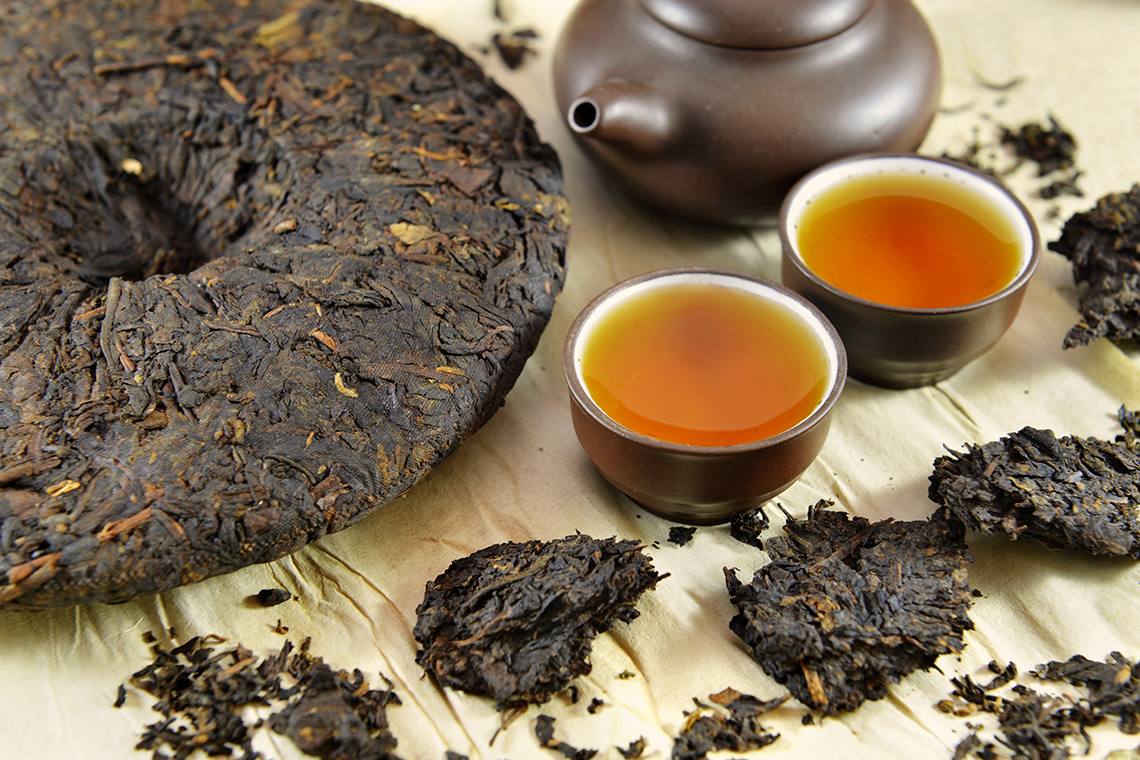
Pu-erh: Tea with depth of taste and centuries of history
Pu-erh is a unique fermented tea that has been valued since ancient times for its rich taste, earthy aroma and special tea rituals. Originating from the southern regions of China, pu-erh has been not just a drink for centuries, but a real cultural phenomenon. Its secret lies in the complex fermentation process, which can last for years, and sometimes decades. The longer the pu-erh is aged, the deeper its taste becomes, which reveals many complex and multifaceted shades.
This category of tea is distinguished by the fact that its taste and aroma are able to develop and improve over the years, like a good wine. Pu-erh is made from large tea leaves that undergo natural fermentation and then are pressed into molds that are easy to store. At the same time, pu-erh continues to "ripen" throughout the entire time it is stored, thanks to which it acquires its characteristic earthy and woody notes. It is believed that the best pu-erh is tea that has been stored for more than ten years.
Taste and aroma of pu-erh
Pu-erh is famous for its unique, incomparable taste. When you first taste this tea, it may seem that its taste is too intense and rich, however, gradually opening up, it gives a rich palette of flavors. Earthy, woody and sometimes even mushroom notes dominate the bouquet of pu-erh, giving it a special uniqueness. This tea has a deep aroma that can resemble the smell of damp earth after rain or old books in the library.
One of the interesting aspects of pu-erh is that its flavor continues to unfold with each new brew. This tea can be brewed several times, and each time it will show new nuances of taste. For example, from the first sip you may feel a slight bitterness, but already on the second or third brewing, the bitter notes will be replaced by sweet and spicy accents that make pu-erh a truly multi-layered drink.
Popular Pu-erh Supplements
Like any other tea, pu-erh can be combined with various additives that will help enrich its taste and make the drink even more interesting.
Dark sugar
One of the most popular additives to pu-erh is dark sugar. This natural sweetener not only softens the strong taste of tea, but also adds its own caramel notes to it. Thanks to dark sugar, pu-erh acquires a special sweetness with a subtle hint of burnt sugar, which makes its taste even deeper and more multifaceted. This combination is especially liked by those who prefer a balanced taste with a slight sweetness and softness.
Cinnamon oil
Cinnamon oil is another interesting addition to pu-erh, which gives the drink spicy and warm notes. It adds a cozy and warm feel to the tea, making it ideal for the cold season. Cinnamon, combined with the earthy taste of pu-erh, creates a harmonious and rich bouquet that pleasantly warms and gives tea drinking a special atmosphere. This option is especially suitable for lovers of spicy and bright flavor accents.
Milk
While it's not the most traditional addition to pu-erh, adding milk to this tea can make it taste even softer and creamier. Milk softens the strength of pu-erh and adds delicate creamy notes to its structure, which gives the drink a special texture. Pu-erh with milk is an option for those who prefer lighter and milder flavors, but still want to preserve the characteristic depth of this fermented tea.
Conclusion
Pu-erh is a tea that rightfully occupies a special place in tea culture. Its unique taste and aroma, the complexity of production and the possibility of "ripeness" make this drink truly exclusive. Each sip of pu-erh is a small journey into the world of traditions and refined flavor combinations. Regardless of whether you prefer classic pu-erh in its pure form or with additives such as dark sugar and cinnamon oil, this tea will always give a special pleasure and an atmosphere of comfort.
Thanks to the blog, I now understand the differences between dark and light teas.
SoirBrewokt provided me with new insights on pairing teas with sweeteners.